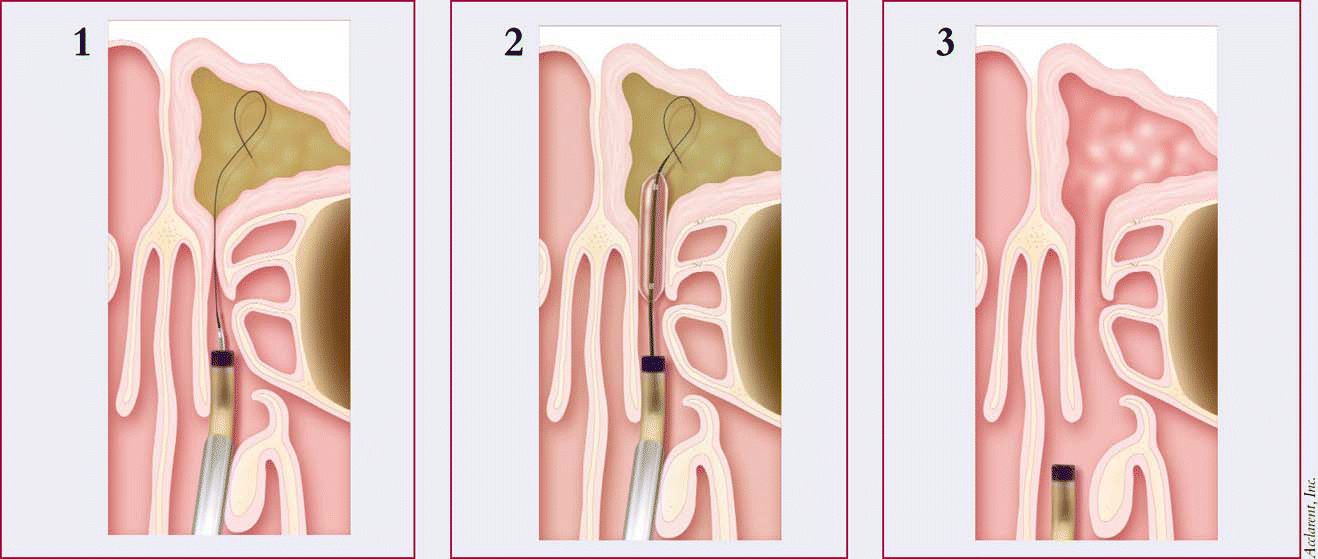The sinuses contain very small bones, as thin as an eggshell, Dr. Bolger explained. So when the balloon expands, microfractures are created and are pushed out of the way, leaving the sinuses open and restoring normal sinus drainage and function.
Explore This Issue
May 2006In the preclinical work on human cadavers, feasibility was demonstrated through 100% dilation of the target sinuses, he said. Importantly, comparison of pre- and post-CT scans, multi-angled endoscopic views, and gross examination showed the technology did not cause damage to surrounding structures such as the orbit or skull base. It did what we expected and did not cause any harm, he said.
Early Results Promising
A follow-up pilot study of 10 human patients with 18 blocked sinuses confirmed the safety of the technology, with the balloon catheter successfully dilating the ostium in all patients without any complications or adverse events.

While the pilot trial was not designed to show efficacy, the device appeared to open blocked sinuses at least as well as standard endoscopic techniques, and patients reported improvement, he said.
Additionally, the studies suggested the device induces minimal trauma, Dr. Bolger noted. About two to three weeks after traditional endoscopic surgery, you need to debride the sinuses and remove the scabs and crusts inside. With the balloon, we observed we had fewer crusts and scabs to remove and less scar tissue to trim, which led us to speculate that there is less mucosal trauma, Dr. Bolger said.
For Now, Use Limited
The device is not for every patient with chronic sinusitis. At least for now, it is only indicated for use in the maxillary, sphenoid, or frontal sinuses-not the ethmoid sinus. In patients with blockages of the ethmoid sinus and at least one other sinus, we might perhaps use conventional endoscopy for the ethmoid and the new device for the other blocked sinuses. The two technologies can complement each other, Dr. Bolger said.
When the balloon expands, microfractures are created and are pushed out of the way, leaving the sinuses open and restoring normal sinus drainage and function. – -William E. Bolger, MD

Leave a Reply